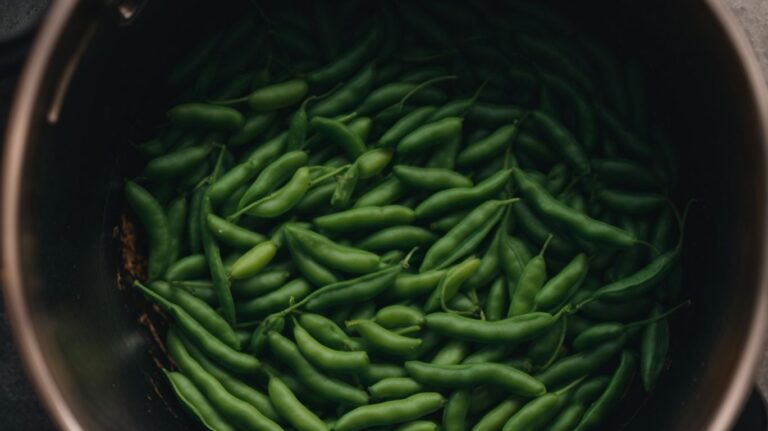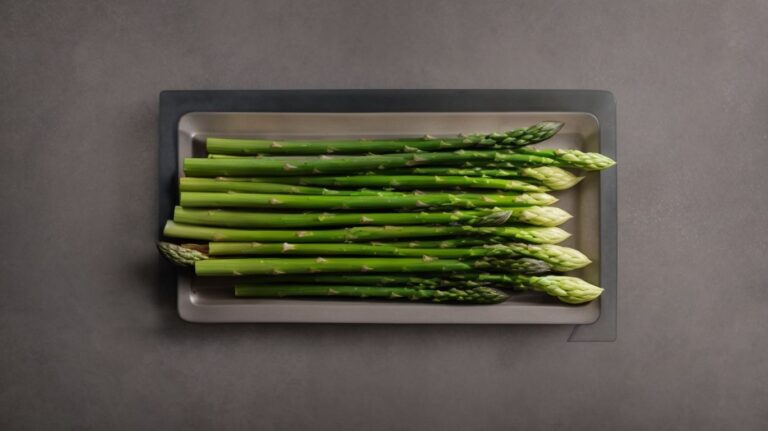How to Cook Mushroom for Soup?
Are you looking to elevate your soup game? Look no further than incorporating mushrooms into your recipes!
Mushrooms add a depth of flavor to any dish and pack a nutritional punch.
In this article, we will explore the different types of mushrooms that work best in soups, how to properly prepare them, what other ingredients can complement their rich taste, and even provide you with a delicious recipe to try at home.
Let’s dive into the world of mushroom soup together!
Key Takeaways:
Why Use Mushrooms in Soup?
Using mushrooms in soup provides a unique depth of flavor, enhancing the overall taste profile with their savory and earthy notes.
One of the key reasons behind the popularity of mushrooms in soup is their ability to add a rich umami taste, which is often described as the fifth basic flavor after sweet, salty, bitter, and sour. Their meaty texture and ability to soak up other flavors make them a versatile ingredient in various cuisines.
To maximize the flavor potential, sautéing mushrooms before adding them to the soup can further intensify the taste experience. This cooking technique allows the mushrooms to caramelize, bringing out their natural sweetness and enhancing the overall depth of the soup.
Nutritional Benefits
In terms of nutritional benefits, mushrooms in soup offer a spectrum of vitamins, minerals, and antioxidants that contribute to a well-rounded and healthy diet.
Incorporating mushrooms into soups not only enhances the flavor profile but also provides a boost of essential nutrients. Mushrooms are an excellent source of vitamin D, crucial for bone health and immune function. They contain antioxidants such as selenium and ergothioneine, which help combat oxidative stress and inflammation in the body. Including mushrooms in your soup can elevate the nutritional value without compromising on taste, making it a simple yet effective way to ensure a balanced meal.
Adds Depth of Flavor
Mushrooms are prized for their ability to infuse soup with a rich umami flavor, elevating the taste profile and creating a more complex and satisfying culinary experience.
One of the key reasons mushrooms are valued in culinary arts is due to their unique capacity to enhance the depth of flavor in various dishes, particularly in soups. Their robust earthy notes and meaty texture make them a versatile ingredient that pairs exceptionally well with different types of broths and seasonings. The wide array of mushroom varieties available allows chefs to experiment and tailor the flavor profile of soups to suit varying preferences, whether it be the delicate aroma of chanterelles or the bold richness of porcini.
Versatile Ingredient
Mushrooms stand out as a versatile ingredient in soups, offering a wide range of textures, flavors, and culinary possibilities that cater to diverse palates and preferences.
From hearty and earthy mushrooms like portobello and shiitake to delicate and buttery varieties such as chanterelles and morels, there’s a mushroom to complement any soup recipe.
Whether sautéed for a rich umami depth, roasted for a crispy texture, or simmered slowly to infuse broth with their essence, mushrooms add a layer of complexity to soups that elevates the overall dining experience.
Types of Mushrooms for Soup
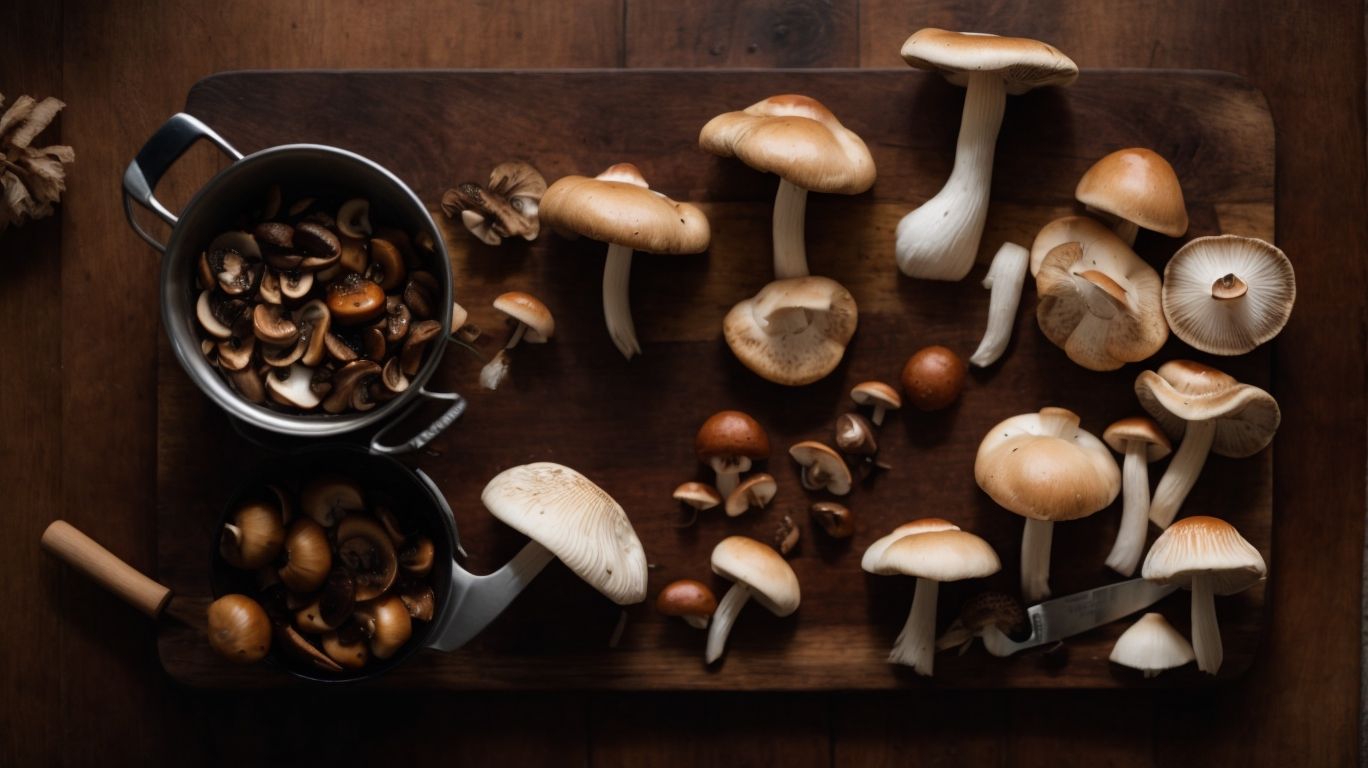
Credits: Poormet.Com – Gregory Rodriguez
When selecting mushrooms for soup, options like button mushrooms, shiitake mushrooms, and cremini mushrooms offer diverse flavors and textures to elevate your culinary creations.
Button mushrooms, also known as white mushrooms, have a mild flavor and smooth texture, making them versatile for various dishes. Shiitake mushrooms, on the other hand, add a robust umami flavor and meaty texture, enhancing the depth of your soup. Cremini mushrooms, often called baby bellas, provide a richer, earthier taste compared to white mushrooms.
Each mushroom type brings a unique nuance to your soup; button mushrooms add a subtle sweetness, shiitake mushrooms offer a bold savoriness, and cremini mushrooms contribute a deep, nutty essence, creating a well-balanced symphony of flavors in your soup.
Button Mushrooms
Button mushrooms are a popular choice for soups due to their mild earthy flavor and ability to absorb other ingredients’ essence, creating a harmonious and comforting dish.
These mushrooms have a unique texture that adds a delightful element to soup recipes, making each spoonful a gratifying experience. Button mushrooms not only provide a subtle umami taste but also contribute to the overall aroma of the soup, enticing anyone who catches a whiff. Their versatility allows them to complement a variety of flavors, from hearty vegetables to savory broths, enhancing the complexity of the dish. As they simmer in the broth, these mushrooms release their natural juices, infusing the soup with a rich depth of flavor. Incorporating button mushrooms into soups ensures a wholesome and satisfying meal, perfect for warming up on cold days.”
Shiitake Mushrooms
Shiitake mushrooms bring a robust umami flavor to soups, adding depth and complexity to the broth while infusing a savory richness that elevates the overall taste.
These versatile mushrooms not only provide a delightful earthy aroma but also offer a meaty texture, making them a popular choice for both vegetarian and meat-based soups. When simmered in a broth, shiitake mushrooms release their unique flavors, creating a harmonious blend with other ingredients.
They are known for their nutritional benefits, containing essential vitamins, minerals, and antioxidants that contribute to overall well-being. Whether sliced, diced, or whole, shiitake mushrooms add a distinctive touch to soups, enhancing their overall flavor profile.
Portobello Mushrooms
Portobello mushrooms, known for their meaty texture and robust flavor, are an excellent choice for adding substance and depth to soups, creating a hearty and satisfying dish.
When added to soups, portobello mushrooms not only provide a substantial bite but also release a rich umami flavor that enhances the overall taste profile of the dish. Their natural juiciness contributes to a luxurious mouthfeel, making every spoonful a gratifying experience. The earthy notes of these mushrooms intertwine with the soup base, infusing it with a savory essence that lingers on the palate. Whether diced finely for a velvety texture or sliced thickly for a more substantial presence, portobello mushrooms bring a delightful complexity that elevates any soup recipe.
How to Prepare Mushrooms for Soup?
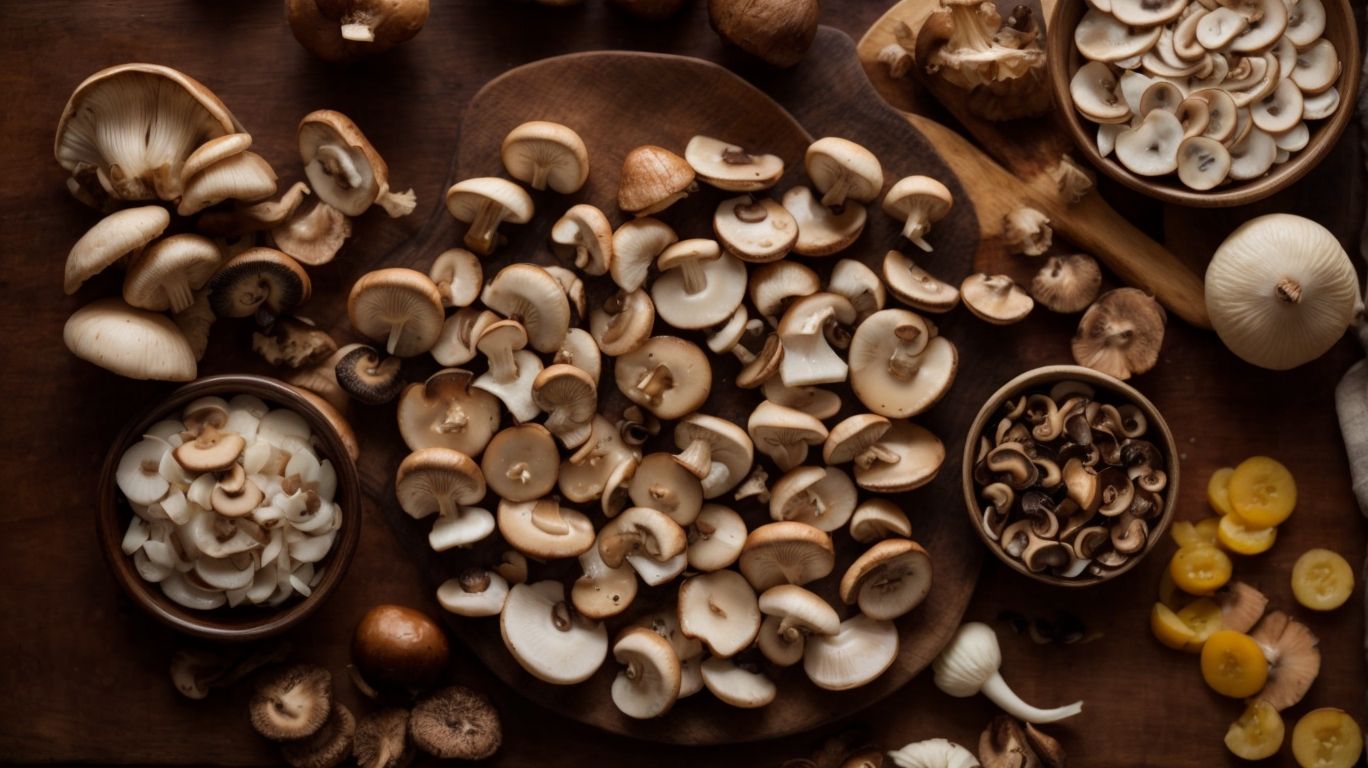
Credits: Poormet.Com – Benjamin Campbell
Preparing mushrooms for soup involves essential steps like cleaning, sautéing, and browning, which help enhance their flavors and create a delicious base for your culinary creation.
Start by choosing fresh mushrooms, ensuring they are firm and free from any blemishes. To clean them, gently wipe with a damp cloth or rinse briefly under cold running water and pat dry. When sautéing, heat oil or butter in a pan and add the sliced mushrooms. Ensure not to overcrowd the pan, allowing them to cook evenly and develop a rich flavor. Browning is crucial to intensify the umami taste; let them sit without stirring to achieve that perfect caramelization.
Cleaning and Trimming
Cleaning and trimming mushrooms before adding them to soups is crucial to remove dirt, ensure freshness, and prepare them for optimal cooking and flavor absorption.
Mushrooms have a porous surface that easily traps dirt and dust, emphasizing the need for thorough cleaning. By removing the stems and any damaged parts, you not only enhance the visual appeal of your dish but also ensure a uniform texture.
Properly cleaned and trimmed mushrooms help to prevent unwanted grit in your soups, setting the stage for a delectable culinary experience. Varying techniques such as soaking, brushing, or wiping can be utilized depending on the type of mushroom and the recipe at hand. It’s essential to maintain high standards of hygiene to preserve the natural flavors and nutritional value of these versatile fungi.
Slicing and Chopping
Slicing and chopping mushrooms in consistent sizes for soups allows for even cooking, uniform texture, and balanced distribution of flavors throughout the dish.
When preparing mushrooms for soups, it is essential to start by cleaning them properly. Gently wipe the mushrooms with a damp paper towel or brush off any dirt rather than washing them, as mushrooms are like sponges and can absorb excess water, affecting their texture and taste.
- Next, choose the appropriate slicing technique based on the type of mushrooms and the desired outcome. For creamy soups, finely chopped mushrooms can enhance the overall creaminess, while thicker slices add a meatier texture.
Sauteeing and Browning
Sauteing and browning mushrooms before adding them to soups enhance their natural flavors, develop depth, and create a caramelized richness that elevates the overall taste profile.
In the culinary world, sautéing mushrooms is an art form that involves cooking them over high heat in a skillet with a touch of olive oil or butter. This process allows the mushrooms to release their moisture, intensifying their flavor. Browning, on the other hand, adds a nutty richness and deepens the taste profile by caramelizing the natural sugars present in the mushrooms.
When mushrooms are sautéed and browned properly, they undergo a transformative process that not only enhances their taste but also changes their texture. The edges become crisp while the centers retain a tender juiciness, creating a delightful contrast that adds complexity to any soup recipe.
What Other Ingredients Can Be Added to Mushroom Soup?
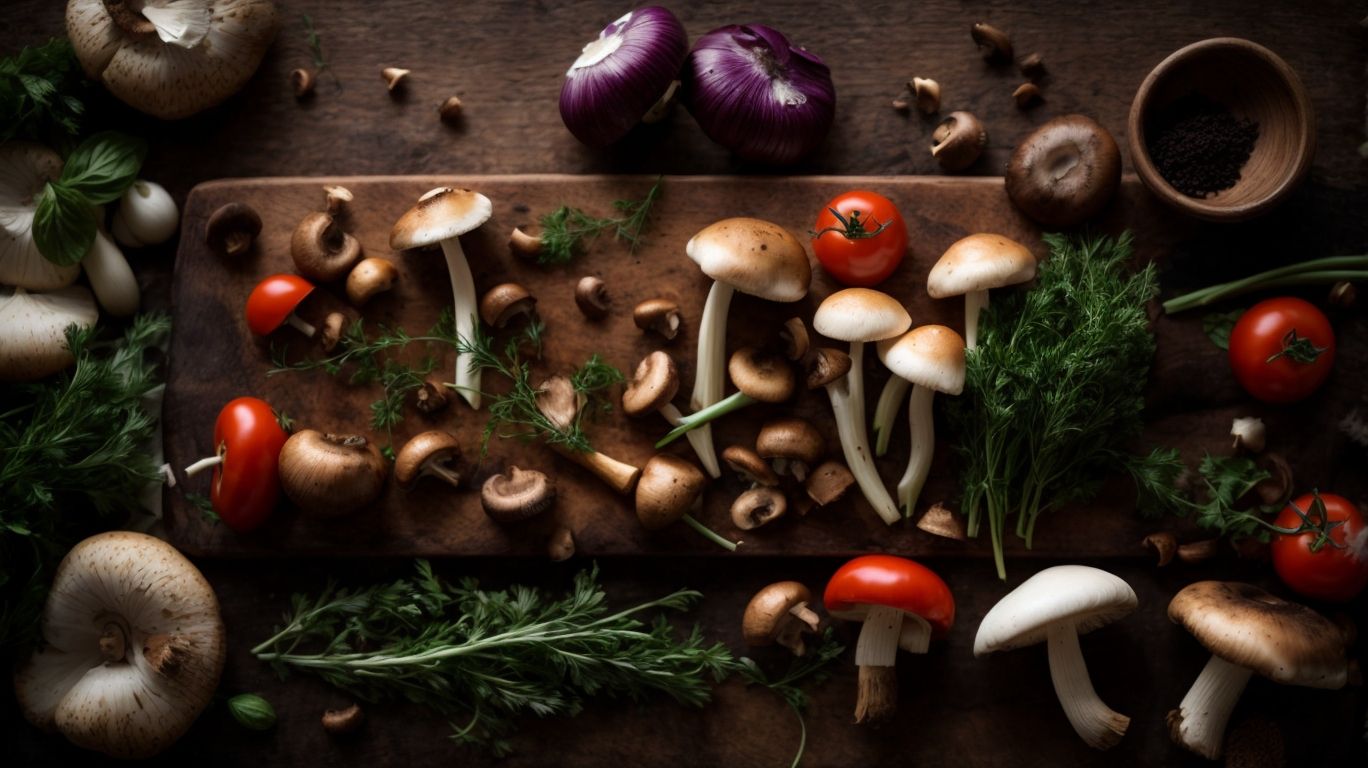
Credits: Poormet.Com – Gerald Wright
Apart from mushrooms, mushroom soup can be enhanced with ingredients like flavorful broth, assorted vegetables, and creamy additions like cream or milk to create a harmonious and satisfying dish.
In terms of choosing a broth, options such as rich beef broth, savory chicken broth, or even a light vegetable broth can add depth and complexity to the soup’s flavor profile.
For vegetable additions, consider classics like carrots, celery, and onions for a traditional touch, or experiment with unique choices like leeks, cremini mushrooms, or spinach for a modern twist.
In terms of dairy options, incorporating heavy cream can lend a luxurious creaminess, while using whole milk offers a lighter touch. Alternatively, for a healthier alternative, consider coconut milk for a dairy-free, tropical note in the soup.
Broth or Stock
Choosing the right broth or stock for mushroom soup is crucial, as it serves as the foundation for flavor development, incorporating mushroom bits and enriching the overall taste experience.
In terms of mushroom soup, the type of broth or stock you opt for can truly make a remarkable difference in the final dish. For instance, a vegetable broth can bring out the earthy flavors of mushrooms, while a chicken broth can add a savory depth to the soup. The homemade broth stands out for its richness and freshness, enhancing the overall quality of the dish. Adding mushroom bits to the soup not only intensifies the mushroom flavor but also provides a delightful texture with every spoonful. This attention to detail in selecting the right components ensures that each bowl of mushroom soup is a culinary delight.
Vegetables
Adding a medley of vegetables like fresh thyme, rosemary, and parsley to mushroom soup not only enriches the flavor profile but also provides a visual appeal and nutritional boost to the dish.
These aromatic herbs bring a depth of earthy and fragrant notes that perfectly complement the umami richness of the mushrooms, creating a harmonious blend of flavors. Plus their taste benefits, thyme, rosemary, and parsley also offer a wealth of health advantages, packed with essential vitamins, minerals, and antioxidants.
Cream or Milk
Incorporating cream or milk, such as heavy cream or coconut milk, in mushroom soup adds a velvety texture, richness, and a creamy undertone that elevates the dining experience to a luxurious culinary adventure.
When cream or milk is gently stirred into the savory blend of earthy mushrooms and aromatic herbs, it not only imparts a luscious consistency but also balances the flavors by mellowing any sharp edges. The dairy component acts as a binding agent, creating a harmonious amalgamation of all the ingredients, ensuring that each spoonful is a symphony of taste and smoothness.
For those looking to experiment with unconventional twists, substituting traditional cream with coconut milk can introduce a whole new dimension to the classic mushroom soup. The delicate sweetness and unique flavor profile of coconut milk can add a tropical flair to the dish, offering a refreshing and unexpected taste sensation.
Recipe for Mushroom Soup
Crafting a delectable mushroom soup requires a blend of fresh ingredients, precise techniques, and a touch of culinary creativity to deliver a velvety, savory delight for your taste buds.
To start your mushroom soup journey, gather 1 lb of fresh mushrooms, 1 medium onion, 2 cloves of garlic, 4 cups of vegetable broth, 1 cup of heavy cream, and seasoning like salt, pepper, and thyme.
- Begin by cleaning and slicing the mushrooms, then finely chop the onion and garlic.
- Heat a tablespoon of olive oil in a pot, sauté the onions until translucent, and add in the garlic and mushrooms to cook until tender.
- Pour in the vegetable broth and let it simmer for about 20 minutes to merge the flavors.
- Next, blend the soup until smooth using a hand blender, stir in the heavy cream, and season with salt, pepper, and thyme to taste.
- Let it simmer for another 5 minutes to thicken.
Serve piping hot with a dollop of crème fraîche and a sprinkle of fresh parsley for an irresistible mushroom soup indulgence!
Ingredients
Key ingredients like garlic, onions, and a flavorful stock form the foundation of a delicious mushroom soup, offering a robust base for flavor development and culinary excellence.
In the world of culinary art, garlic and onions are renowned for their ability to infuse dishes with rich, aromatic flavors. In a mushroom soup, garlic adds a pungent, earthy taste while onions bring a subtle sweetness to the mix.
Meanwhile, a well-prepared stock, whether it be vegetable, chicken, or beef-based, acts as the liquid backbone of the soup, amplifying the umami depth and overall savory profile. A quality stock enhances the overall complexity of the soup while providing a well-balanced base for all the flavors to meld together harmoniously.
Instructions
Simmering the soup to blend flavors and using a blender to achieve a velvety texture are essential steps in creating a sumptuous mushroom soup that entices the palate and warms the soul.
Simmering infuses the broth with the rich essence of mushrooms, allowing their earthy flavors to meld perfectly with aromatic herbs and seasonings.
Smooth blending ensures that the soup achieves a luscious consistency, with no chunks or uneven textures, resulting in a luxurious mouthfeel that delights with every spoonful.
For an elevated presentation, garnish the soup with a drizzle of truffle oil, a dollop of creamy crème fraîche, and a sprinkle of freshly chopped chives.
Tips and Tricks
Enhance the savory goodness of your mushroom soup with tips and tricks that elevate flavors, textures, and overall dining pleasure, turning a simple dish into a culinary masterpiece.
Beyond the basic recipe, adding a dash of truffle oil can introduce a luxurious umami depth. For a creamy consistency, consider blending in cashew cream or coconut milk instead of heavy cream. Elevate the earthy tones by sprinkling toasted pine nuts or crispy fried shallots as a topping. To enhance the aroma, simmer the mushrooms with fresh thyme or rosemary and finish with a squeeze of lemon juice for a bright touch.
Serving and Storing Mushroom Soup
Serving mushroom soup piping hot with a side of crusty artisan bread or no yeast bread loaf makes for a delightful meal, while storing leftovers in the fridge ensures you can savor the flavors later.
In terms of serving mushroom soup, the choice of bread can elevate the dining experience. For a classic pairing, opt for a baguette with a crispy crust that complements the creamy texture of the soup. Alternatively, a hearty sourdough loaf adds a tangy contrast to the earthy mushroom flavors.
To maintain the freshness and flavor of mushroom soup for future enjoyment, proper storage is key. After allowing the soup to cool, transfer it to an airtight container before refrigerating. This helps prevent the absorption of other odors in the fridge and keeps the soup at its best.
Frequently Asked Questions
How to Cook Mushroom for Soup?
What type of mushroom is best for making soup?
Commonly used mushrooms for soup include button, cremini, and shiitake. However, you can use any type of mushroom that you prefer for your soup.
Should I wash the mushrooms before cooking them?
It is not recommended to wash mushrooms as they can absorb too much water and become soggy. Instead, use a damp paper towel to wipe off any dirt or debris.
Do I need to remove the stems from the mushrooms?
It depends on personal preference and the type of mushroom you are using. For button mushrooms, the stems are edible and can be left on. However, for shiitake mushrooms, the stems are tough and should be removed.
How to Cook Mushroom for Soup?
Can I use canned mushrooms for soup?
While fresh mushrooms are preferred, canned mushrooms can also be used for soup. However, they may not have the same texture and flavor as fresh mushrooms.
How should I slice the mushrooms for soup?
It is recommended to slice the mushrooms evenly and not too thin so that they hold their shape in the soup. You can also cut them into quarters or halves, depending on your preference.
How long should I cook the mushrooms in the soup?
It is best to cook the mushrooms for about 5-7 minutes in the soup. This will allow them to fully absorb the flavors of the soup without becoming too mushy.


